Forget a ‘new normal’: Experts say Australia’s worst bushfires still lie ahead
"The new normal is continuous change. As soon as we start to think we’re on top of climate change, new things will happen that we’re not able to manage," a climate expert tells CNA's Jack Board.
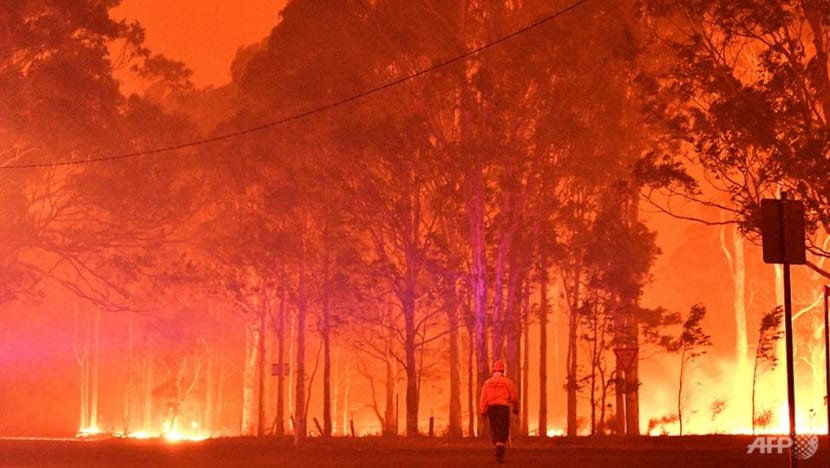
A firefighter walks past burning trees during a battle against bushfires around the town of Nowra.(Photo: AFP/Saeed Khan)
MOGO, Australia: For Rochelle Ethell and her family, finding a spot of pure bushland on the south coast of New South Wales was the culmination of a dream. Their small acreage is close to the beach and a haven for local wildlife.
“The birds, the surroundings and just a different lifestyle. I couldn’t bring my kids up anywhere else,” she said.
But for the past few weeks, the realities of a life surrounded by nature have brought little but danger and displacement. Bushfires have ripped through the area, turning the skies black with ash and leaving indelible marks not only on the landscape, but on the psyche of small rural communities.
READ: From Australian bushfire ashes, a community rises in solidarity
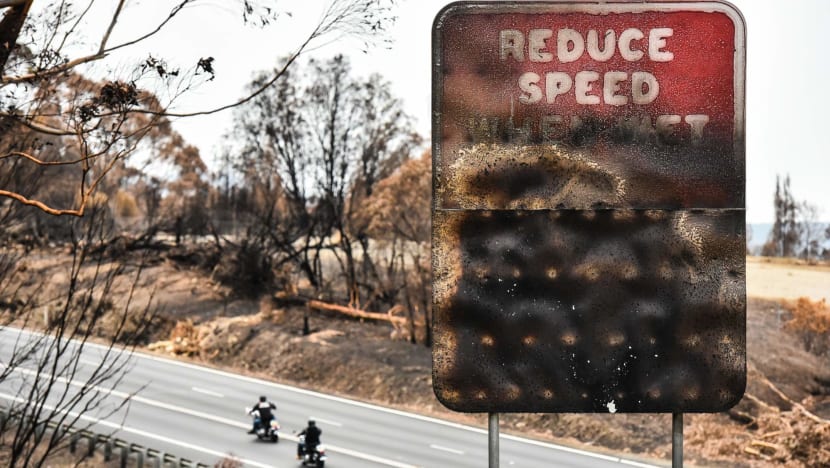
On New Year’s Eve, Rochelle Ethell was meant to be ushering in 2020 with friends. The celebrations had already been muted by the looming threat and a deep orange sky that hung over Long Beach. They had been forced to evacuate their home earlier that month as the risks intensified. The community had emerged relatively unscathed on that day, and were able to return home.
But what was coming at them now was a beast. Up and down the coast and into the hinterland, different fire fronts were tearing through sections of bush that had not burned for decades. The family was at risk and ordered to leave again. They did so, with Ethelle fleeing with her husband, two children, dog, cat, two birds and three chickens in tow.
“It was a very stressful day not knowing if we were able to go home. It’s not something I’d ever want to put my children through or experience again myself,” she said.
As they cowered, sweltering in the heat, soon the bad news came flowing in. Ethell was getting condolence messages she did not initially understand. Her business, a small tea salon in the historic town of Mogo, had been destroyed in the flames. “There was nothing left. It was all gone.”

It took two days for her business neighbour and close friend Lexie Dunn to discover the same fate had befallen her shop, a fashion boutique. “It’s just devastating. I’ve lost my dream, a place that I used to come every day. I’ve been telling people, you know, I’ve loved this shop as much as I love my kids,” she said.
“I just presumed it was going to be okay, and didn't think that this could happen to me. But it has.”
The fire’s intensity and speed on that day and night shocked even one of Australia’s most experienced fire officials - former New South Wales fire commissioner turned fighting volunteer, Greg Mullins.
“I’ve seen lots of fire over nearly 50 years of firefighting. I’ve never seen anything quite like this: The heat of the flames, the distance that new fires are starting ahead of the main fires because of sparks that were blown by very strong winds,” he told CNA.
“As firefighters, we had to run for our lives on a number of occasions. There were streets we simply just couldn’t go into because of the intensity of the fires. There were many, many homes that caught on fire and there was no way that we could put them out.”
READ: 'Too late to leave': Bushfires out of control across southeast Australia
It is these type of fire events, unparalleled in Australia’s history, that experts confidently predict will return in the near future. Last year was the country’s driest and hottest in known history. It is not a record expected to stand for long.
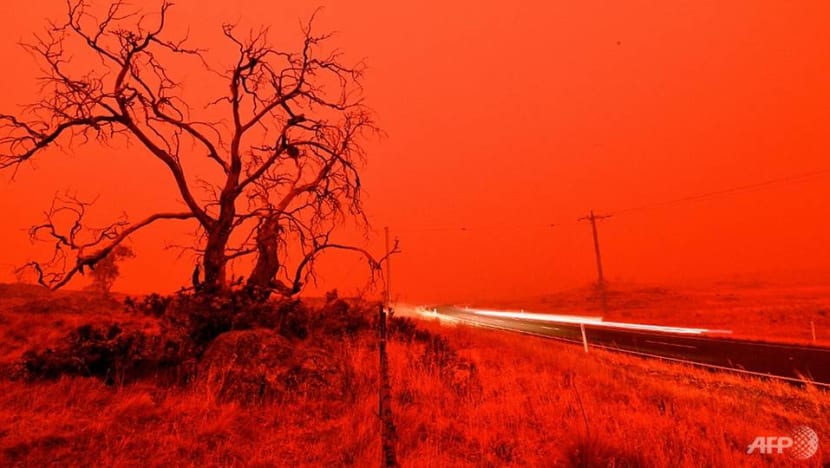
A FUTURE YOU REALLY WANT?
The rise in temperature that Australia experienced in 2019 - more than two degrees above the 1960-1990 baseline - was “extraordinary”, according to Professor Mark Howden, the director of the Climate Change Institute at the Australian National University and Vice Chair of the Intergovernmental Panel on Climate Change. And the science indicates that the only trajectory for heat in the country is up.
“We’re likely to see that go up and up and up under the current emission commitments and actions that are taken globally. That will continue to drive things like extreme fires,” Prof Howden said.
READ: Authorities warn Australian bushfires developing their own weather systems
He says there will be no time to get used to this hotter, drier environment. More intense, prolonged and damaging weather systems are on the way. “In a constantly changing environment, there is no new normal. The new normal is continuous change. As soon as we start to think we’re on top of climate change, new things will happen that we’re not able to manage,” he said.
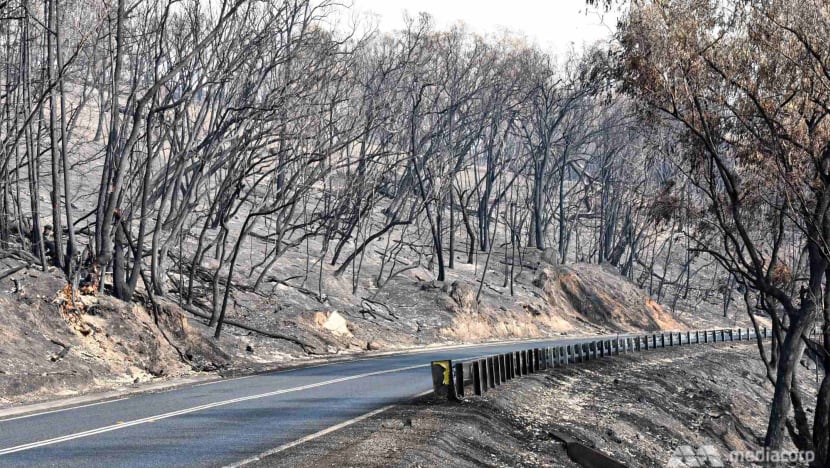
Historical climatologist Dr Linden Ashcroft researches past weather patterns and events to help better understand our climate future. And it is scary, she says.
“It was the hottest and driest and not by a little bit. We truly knocked it out of the park,” she said. “Scientifically, we know that these events are going to happen more often. But how common, how frequent and how devastating they are comes down to how much more we let the world heat up.
“It’s not to say there won’t be a future, but is that a future you really want? Where you have to wear a mask every day in the summer to walk your dog because every mountain is on fire. If you’re afraid to go out into nature because a fire could start any time, then that’s a weird world to be in. I think we can do better than that.”
READ: UN warns more extreme weather ahead after hottest decade on record
READ: Extreme weather events in 2019 - Killer typhoons, Venice floods and the Sydney smoke crisis
The Australian government has been reticent to draw direct comparisons between these bushfires and climate change. In fact, scepticism of the global crisis among influential members of the ruling party has stymied even modest changes to Australia’s economy, energy use or major industry. The country overwhelmingly relies on mineral extraction, including coal, and exports as a source of national prosperity, as a result making it one of the worst polluters, per capita, in the world.

Even throughout this disaster season, Prime Minister Scott Morrison has proven reluctant to answer probing questions about the impacts of climate change and worsening future fire seasons. He has suffered in public opinion polls in recent weeks.
“You cannot link any individual, single emissions reduction policy of any country, whether it’s Australia or anyone else, to any specific fire event,” Morrison told the ABC during an interview on Jan 10. “I mean, that’s just absurd.”
‘THE TIPPING POINT IS VERY NEAR’
The government has committed to reducing its national emissions by 26 per cent to 28 per cent on 2005 levels by 2030 under the Paris Agreement, a lowly objective compared to many other developed nations. But it is unclear whether the very limited climate policies currently in place will get the country close to achieving that target.
“The policies currently are flatlining our greenhouse emissions. They’re not heading them downwards,” Prof Howden said. “There are ways of moving ahead on this issue but it does require a change of mindset and it does require leadership.”
The Australian Greens, a minor but vocal party on the national and state level, has been escalating its calls for “a wholesale shake up of our political, economic, and social systems”.
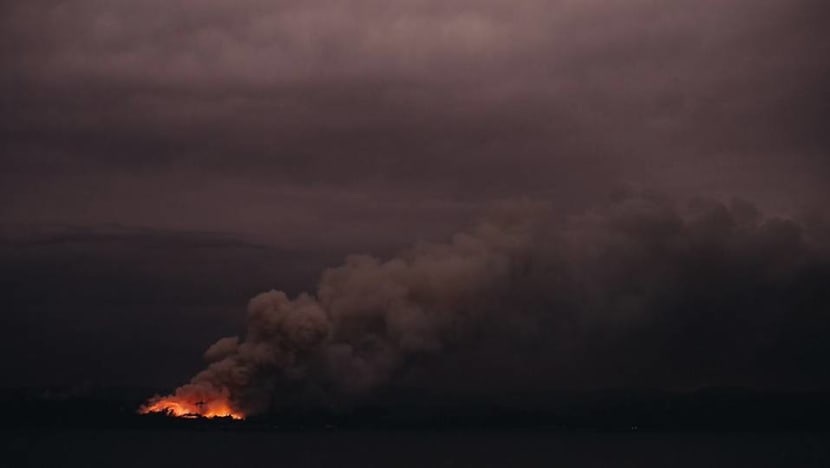
“Australia has sadly become an embarrassment on the world stage. Not only are we not taking enough action on climate change but we have been trying to wreck climate change action globally as well,” said NSW Greens senator Mehreen Faruqi.
Commentary: Climate change needs better storytelling to address severe threats
Other experts have highlighted the potential for Australia to refashion mining-dependent towns into renewable energy hubs and invest in new innovative technology. The potential political cost of such dramatic or expensive actions have long proven a barrier.
Yet despite a polarised national debate, powered by government rhetoric and prominent media outlets, a 2019 survey by independent think tank Lowy Institute showed Australians overwhelmingly accepted the challenges and risks that lay ahead.
With shocking images of bushfires destroying the environment around the country and toxic smoke hanging for weeks in major cities - and even spreading around the globe - there is a growing sense that change and action is required.
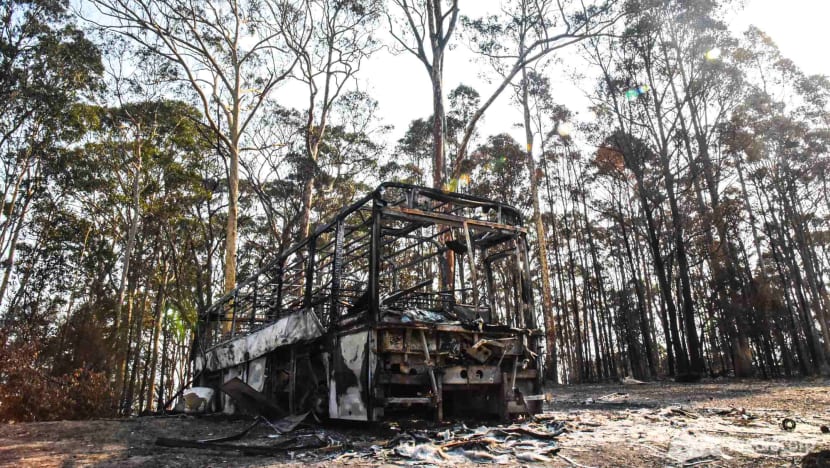
“It’s really captured the world’s imagination about what a scary apocalypse looks like. It’s so visual. It’s so graphically terrifying,” Dr Ashcroft said.
“The community obviously has been going through a rollercoaster of emotions: distress, sadness, anxiety and anger. A lot of anger,” Faruqi added.
“The community is definitely demanding strong actions and I do feel that the tipping point is very near, if it is not here already. We need to make sure that business as usual is no longer what we do,” she said.
Greg Mullins says he and other former fire chiefs tried to warn Prime Minister Morrison months ago about the fire threat this year and for the years to come. After being “fobbed off”, now he sees victims angrily demanding more from their leaders.
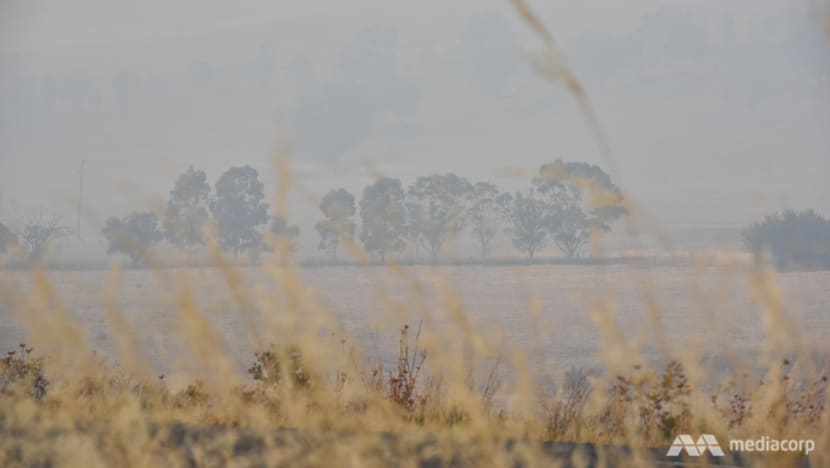
“People in Australia want to know why these were the worst fires ever experienced and why we can’t seem to do much about it. And that’s because it has been supercharged by climate change. Therefore, action must be taken.”
Business owner Lexie Dunn is one of those suffering, her beloved Mogo store a pile of burned rubble and facing tens of thousands of dollars of losses. She is questioning strategies from authorities to keep people safe. “This is too big now to be just sweeping the ash under the mat and forgetting about it. They can’t afford to screw up again,” she said.
READ: Relief as rain falls over Australian bushfires
READ: Rain to bring relief, risks to fire-stricken Australia
As adaptation and resilience emerge as political buzzwords in the aftermath of the very worst fires this season, tough questions also loom for bush communities and the viability of rebuilding houses, businesses and lives in increasingly vulnerable locations.
Because regardless of national policy, relief will not be coming anytime soon.
READ: Australia seen waiting till March for sustained rains to douse bushfires
Unimaginable swathes of blackened bush and forest now dominate the landscape of southeast Australia. Land that is fortunately still green today could burn next summer.
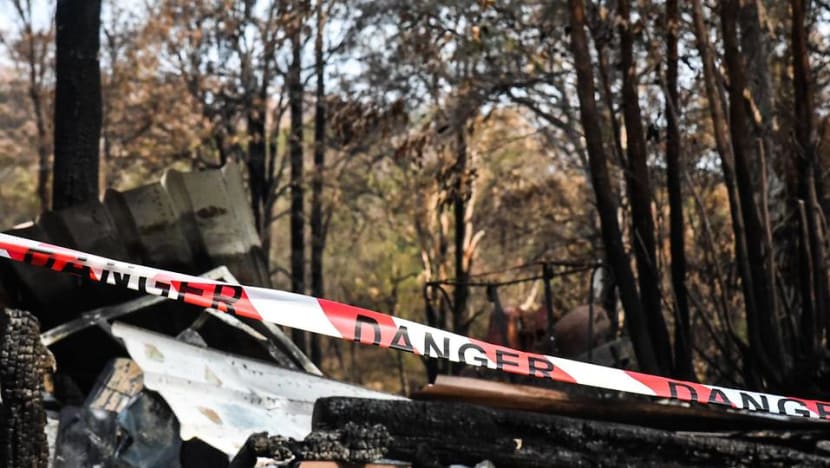
“There is no guarantee that this won’t happen again. And the way the climate change is affecting our everyday lives, it will happen again,” Rochelle Ethell said, reflecting on her long-term future in their Long Beach home, surrounded by nature.
“We built in this beautiful environment, surrounded by birds and wildlife to give our children an upbringing so they get to enjoy those things. And we might lose that next summer.
“Until we make some significant changes, we’re always going to have this prospect of bushfires. It’s heartbreaking and you just feel so helpless. No one is leading us in the right direction. It gets me upset. And it’s scary.”














